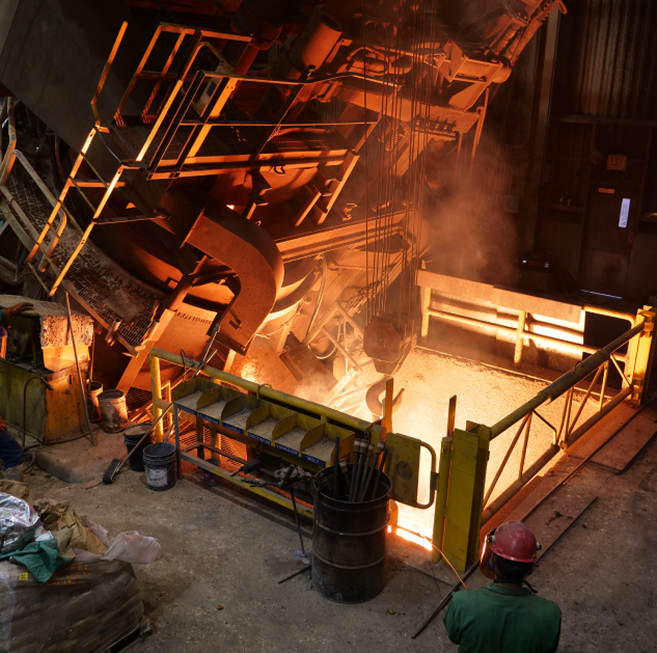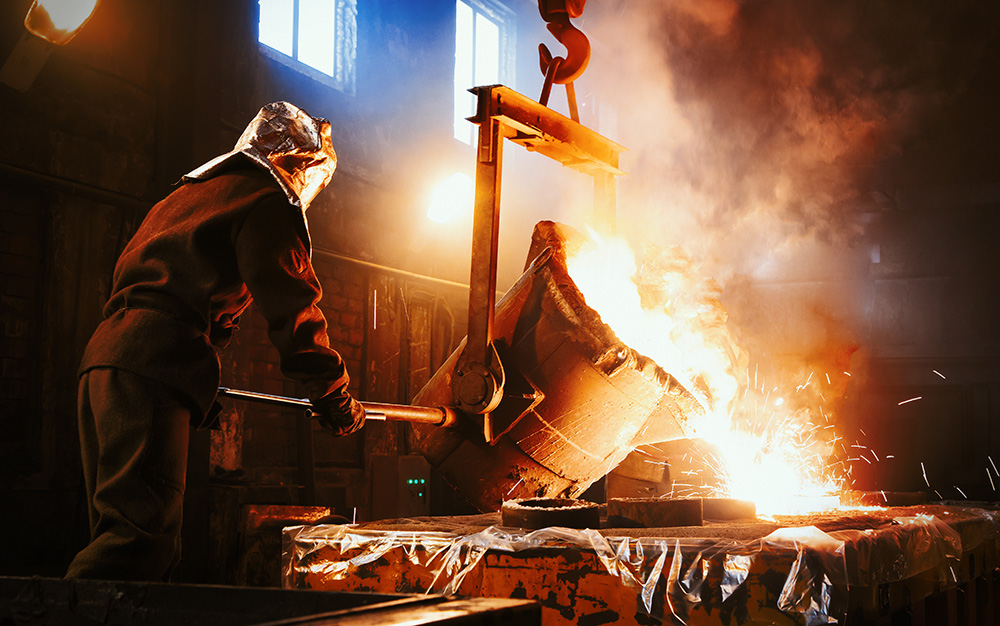How inspection systems ensure precision and excellence in every Metal Foundry pour
Wiki Article
Discover the Ingenious Strategies Made Use Of in a Metal Foundry for Superior Casting Results
In today's competitive manufacturing landscape, metal foundries are significantly taking on ingenious techniques to enhance casting outcomes - Aluminum Foundry. Advanced computer simulations permit for accurate modeling of molten metal habits, while 3D printing enables fast manufacturing of complex molds. In addition, environment-friendly products and automation enhance operations. These advancements promise substantial enhancements in performance and quality assurance. However, the influence of these modern technologies on sustainability and manufacturing techniques remains to be totally exploredAdvanced Computer System Simulations in Metal Casting
Advanced computer system simulations have transformed the metal casting procedure by boosting accuracy and effectiveness. These sophisticated devices enable designers to create online designs of cast components, enabling them to examine and predict the actions of molten metal during the spreading stage. By simulating different criteria such as temperature, flow price, and air conditioning prices, makers can recognize possible problems before physical manufacturing starts.This positive technique lowers waste and decreases pricey mistakes, eventually resulting in enhanced item quality. Furthermore, simulations facilitate the optimization of mold designs, guaranteeing that they fulfill the particular needs of each project. The assimilation of computational liquid dynamics (CFD) and finite component analysis (FEA) further adds to the accuracy of these simulations, giving understandings that were previously unattainable. Consequently, progressed computer simulations have become a crucial component of modern-day metal foundries, significantly progressing the industry's capacities.
3D Printing for Mold And Mildews and Patterns
3D printing has actually arised as a groundbreaking technique for developing mold and mildews and patterns in the metal foundry industry. This innovation enables the quick production of intricate geometries that traditional production techniques struggle to accomplish. By utilizing additive manufacturing, foundries can develop complex styles with lowered lead times and material waste. The capacity to generate molds on need allows for better flexibility in design versions, assisting in faster prototyping and alterations.3D printing can use a selection of products, consisting of plastics and steels, tailored to specific casting demands. This adaptability improves the accuracy of molds, causing exceptional casting results with enhanced surface area finishes. Furthermore, the decrease in the variety of components needed streamlines assembly processes, even more enhancing production efficiency. As foundries remain to embrace 3D printing, they are positioned to redefine industry standards, leading the means for advancement and improved productivity in metal spreading procedures.
Eco-Friendly Products and Processes
As the metal foundry market faces enhancing stress to reduce its ecological footprint, the adoption of green materials and procedures has become vital. Foundries are currently exploring sustainable options to traditional products, such as utilizing bio-based binders and recycled metals. These products not only lessen waste however likewise lower power intake during manufacturing.In addition, innovations in sand casting techniques have actually resulted in the use of synthetic sands that are much less harmful to the setting. Factories are additionally implementing ingenious procedures like molten metal treatment that decreases discharges and boosts the quality of actors items.
Moreover, water-based coatings have changed poisonous solvents, advertising a much safer workplace (Metal Foundry). By integrating these environment-friendly techniques, metal foundries can noticeably decrease their eco-friendly effect while maintaining top quality spreading outcomes. This shift not just profits the atmosphere yet likewise aligns with the growing consumer need for lasting production remedies
Automation and Robotics in Foundry Workflow
While the metal foundry industry welcomes technology, the integration of automation and robotics is changing operations considerably. Automated systems streamline processes such as mold and mildew production, metal pouring, and casting ending up, considerably improving effectiveness. Robotics help with the handling of heavy products, reducing the risk of work environment injuries and ensuring safer settings.
Better, using automated directed vehicles (AGVs) enhances product transportation within facilities, making sure timely shipment of components to appropriate workstations. By executing these innovations, foundries can adapt to varying needs with greater agility, ultimately leading to enhanced profitability and competitiveness out there. As automation and robotics remain to develop, they hold the prospective to redefine traditional foundry practices and drive additional improvements in casting techniques.
Real-Time Tracking and High Quality Control Techniques
The advancements in automation and robotics have led the way for extra sophisticated approaches to high quality assurance in metal foundries. Real-time tracking systems use innovative sensors and information analytics to track critical parameters throughout the casting process. These systems continually assess variables such as product, stress, and temperature structure, enabling immediate detection of discrepancies from developed standards.Quality assurance techniques now incorporate artificial intelligence algorithms find out here that analyze historic data to anticipate potential problems before they take place. This aggressive strategy decreases waste and enhances total production efficiency. In addition, integrated feedback loops enable quick modifications, ensuring that each casting fulfills strict quality requirements.
The execution of digital twins-- virtual reproductions of physical possessions-- has additionally transformed top quality assurance, permitting engineers to imitate and maximize processes in real-time. Together, these innovative methods substantially improve the dependability and top quality of castings, establishing new market requirements in metal foundry operations.
Often Asked Questions
What Sorts of Metals Are Generally Cast in Shops?
Frequently cast metals in foundries include aluminum, brass, iron, and bronze. Each metal shows special buildings, making them suitable for different This Site applications, such as automobile components, equipment, and artistic sculptures, enhancing their flexibility in manufacturing.
How much time Does the Casting Process Normally Take?
The spreading process generally takes a number of hours to days, depending on elements such as the intricacy of the mold, kind of metal made use of, and cooling demands. Each phase influences the general duration significantly.What Safety Measures Remain In Location for Foundry Employees?

Exactly how Are Issues in Castings Identified and Addressed?
Flaws in spreadings are identified via visual assessments and non-destructive screening methods. Once identified, foundry employees resolve them by refining processes, readjusting product structures, and implementing corrective procedures to assure quality and conformity with requirements.What Is the Price Variety for Metal Casting Solutions?
The cost variety for metal casting services normally ranges $1 to $10 per extra pound, depending upon variables such as product type, intricacy of the layout, and production volume, affecting total rates substantially.In today's affordable manufacturing landscape, metal foundries are increasingly adopting innovative methods to enhance spreading results. As the metal foundry market encounters increasing stress to reduce its ecological footprint, the fostering of environment-friendly materials and procedures has come to be important. Factories are currently exploring sustainable choices to traditional materials, such as using recycled metals and bio-based binders. By incorporating these environmentally friendly methods, metal foundries can significantly lower their environmental impact while preserving high-quality spreading results. The innovations in automation and robotics have actually led the way for much Our site more innovative techniques to high quality guarantee in metal foundries.
Report this wiki page